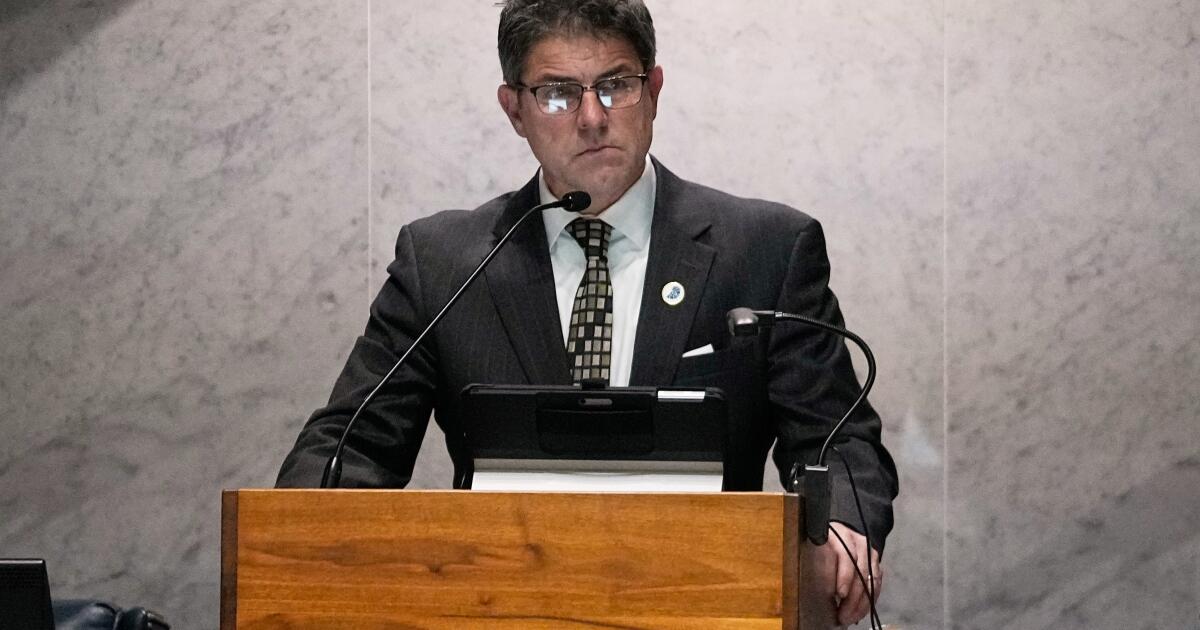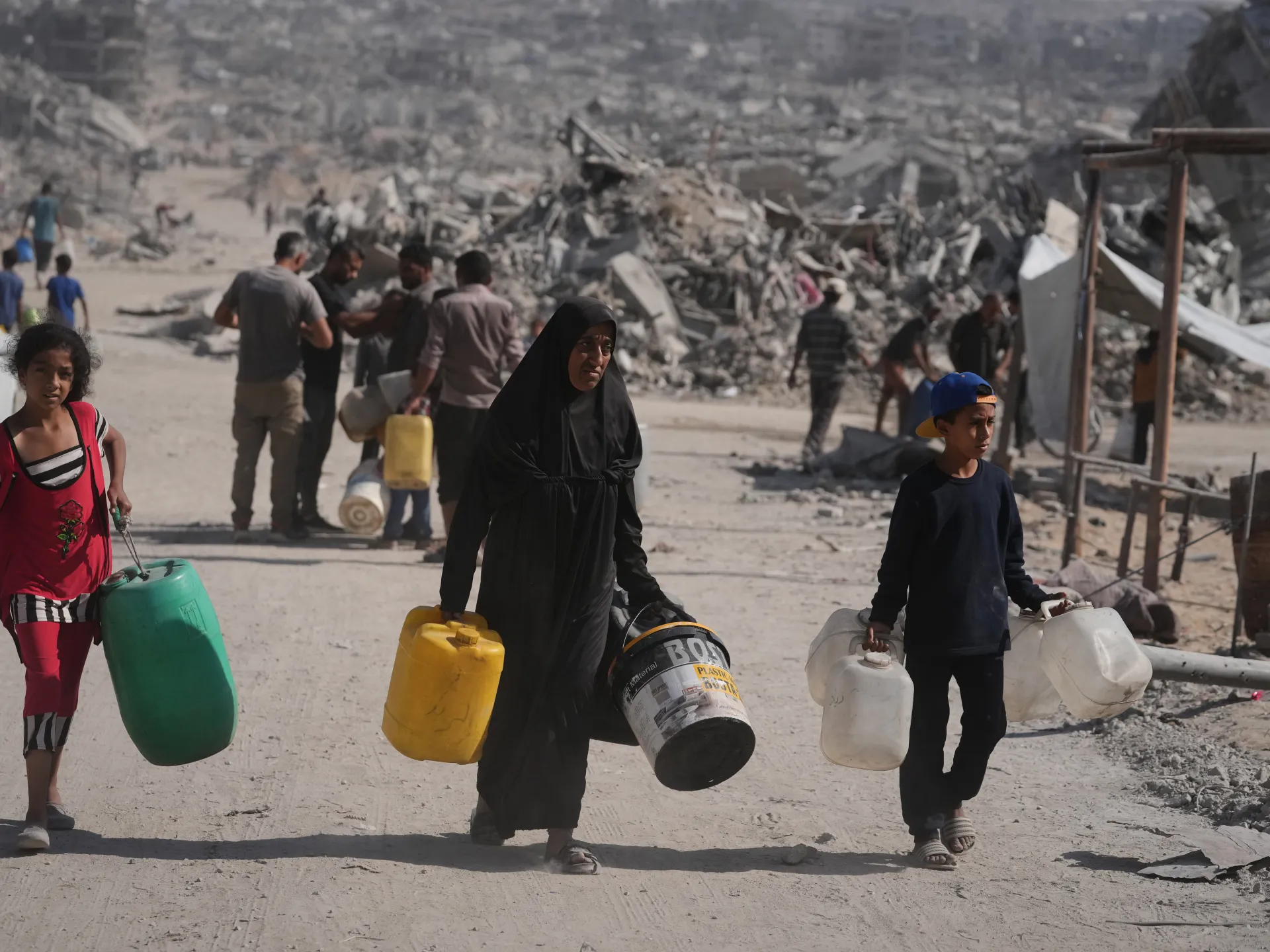Trump’s redistricting push hits roadblocks in Indiana and Kansas as Republican lawmakers resist
For most of President Trump’s second term, Republicans have bent to his will. But in two Midwestern states, Trump’s plan to maintain control of the U.S. House in next year’s election by having Republicans redraw congressional districts has hit a roadblock.
Despite weeks of campaigning by the White House, Republicans in Indiana and Kansas say their party doesn’t have enough votes to pass new, more GOP-friendly maps. It’s made the two states outliers in the rush to redistrict — places where Republican-majority legislatures are unwilling or unable to heed Trump’s call and help preserve the party’s control on Capitol Hill.
Lawmakers in the two states still may be persuaded, and the White House push, which has included an Oval Office meeting for Indiana lawmakers and two trips to Indianapolis by Vice President JD Vance, is expected to continue. But for now, it’s a rare setback for the president and his efforts to maintain a compliant GOP-held Congress after the 2026 midterms.
Typically, states redraw the boundaries of their congressional districts every 10 years, based on census data. But because midterm elections typically tend to favor the party not in power — and the GOP holds a razor-thin majority in the House — Trump is pressuring Republicans to devise new maps that favor their candidates.
Democrats need to gain only three seats to flip House control, and the fight has become a bruising back-and-forth.
With new maps of their own, multiple Democratic states including California are moving to counter any gains made by Republicans. The latest, Virginia, is expected to take up the issue in a special session starting Monday.
Opposition to gerrymandering has long been a liberal cause, but Democratic states are now calling for redistricting in response to Trump’s latest effort, which they characterize as an unprecedented power grab.
Indiana
Indiana, whose U.S. House delegation has seven Republicans and two Democrats, was one of the first states on which the Trump administration focused its redistricting efforts this summer.
But a spokesperson for state Senate Leader Rodric Bray’s office said Thursday that the chamber lacks the votes to redraw Indiana’s congressional districts. With only 10 Democrats in the 50-member Senate, that means more than a dozen of the 40 Republicans oppose the idea.
Bray’s office did not respond to requests for an interview.
The holdouts may come from a few schools of thought. New political lines, if poorly executed, could make solidly Republican districts more competitive. Others say they believe it is simply wrong to stack the deck.
“We are being asked to create a new culture in which it would be normal for a political party to select new voters, not once a decade — but any time it fears the consequences of an approaching election,” state Sen. Spencer Deery, a Republican, said in a statement in August.
Deery’s office did not respond to a request for an interview and said the statement stands.
A common GOP argument in favor of new maps is that Democratic-run states such as Massachusetts have no Republican representatives, while Illinois has used redistricting for partisan advantage — a process known as gerrymandering.
“For decades, Democrat states have gerrymandered in the dark of the night,” Republican state Sen. Chris Garten said on social media. “We can no longer sit idly by as our country is stolen from us.”
Republican Lt. Gov. Micah Beckwith, who would vote to break a tie in the state Senate if needed, recently called on lawmakers to forge ahead with redistricting and criticized the holdouts as not sufficiently conservative.
“For years, it has been said accurately that the Indiana Senate is where conservative ideas from the House go to die,” Beckwith said in a social media post.
Indiana is staunchly conservative, but its Republicans tend to foster a deliberate temperance. And the state voted for Barack Obama in 2008.
“Hoosiers, it’s very tough to to predict us, other than to say we’re very cautious,” former GOP state lawmaker Mike Murphy said. “We’re not into trends.”
The party divide reflects a certain independent streak held by voters in Indiana and Kansas and a willingness by some to break ranks.
Writing in the Washington Post last week, former Gov. Mitch Daniels, a Republican, urged Indiana lawmakers to resist the push to gerrymander. “Someone has to lead in climbing out of the mudhole,” he said.
“Hoosiers, like most Americans, place a high value on fairness and react badly to its naked violation,” he wrote.
Kansas
In Kansas, Republican legislative leaders are trying to bypass the Democratic governor and force a special session for only the second time in the state’s 164-year history. Gov. Laura Kelly opposes mid-decade redistricting and has suggested it could be unconstitutional.
The Kansas Constitution allows GOP lawmakers to force a special session with a petition signed by two-thirds of both chambers — also the supermajorities needed to override Kelly’s expected veto of a new map. Republicans hold four more seats than the two-thirds majority in both the state Senate and House. In either, a defection of five Republicans would sink the effort.
Weeks after state Senate President Ty Masterson announced the push for a special session, GOP leaders were struggling to get the last few signatures needed.
Among the holdouts is Rep. Mark Schreiber, who represents a district southwest of Topeka. He told the Associated Press that he “did not sign a petition to call a special session, and I have no plans to sign one.” Schreiber said he believes redistricting should be used only to reflect shifts in population after the once-every-10-year census.
“Redistricting by either party in midcycle should not be done,” he said.
Republicans would probably target U.S. Rep. Sharice Davids, the Democrat representing the mostly Kansas City-area 3rd Congressional District, which includes Johnson County, the state’s most populous. The suburban county accounts for more than 85% of the vote and has trended to the left since 2016.
Kansas has a sizable number of moderate Republicans, and 29% of the state’s 2 million voters are registered as politically unaffiliated. Both groups are prominent in Johnson County.
Republican legislators previously tried to hurt Davids’ chances of reelection when redrawing the district, but she won in 2022 and 2024 by more than 10 percentage points.
“They tried it once and couldn’t get it done,” said Jack Shearer, an 82-year-old registered Republican from suburban Kansas City.
But a mid-decade redistricting has support among some Republicans in the county. State Sen. Doug Shane, whose district includes part of the county, said he believes his constituents would be amenable to splitting it.
“Splitting counties is not unprecedented and occurs in a number of congressional districts around the country,” he said in an email.
Volmert and Hanna write for the Associated Press. Volmert reported from Lansing, Mich., and Hanna from Topeka, Kan. AP writer Heather Hollingsworth in Lenexa, Kan., contributed to this report.

